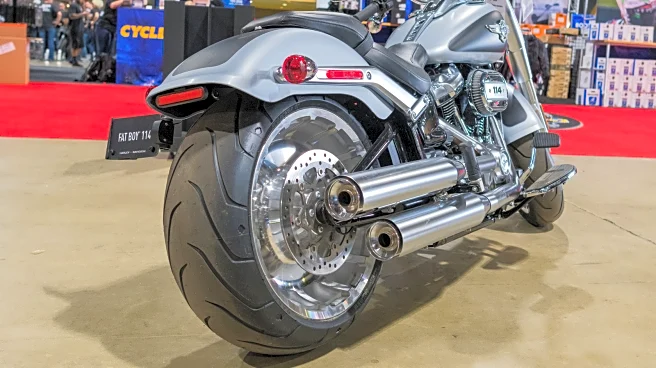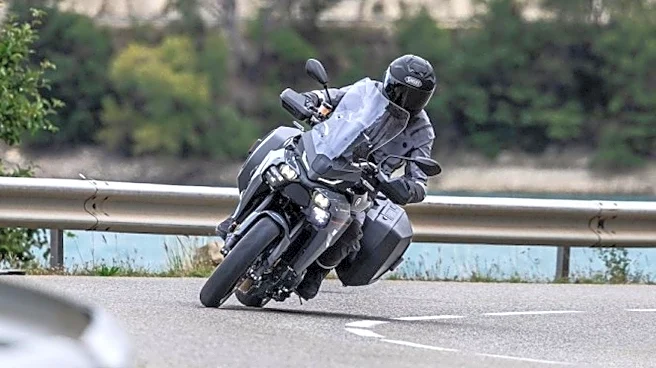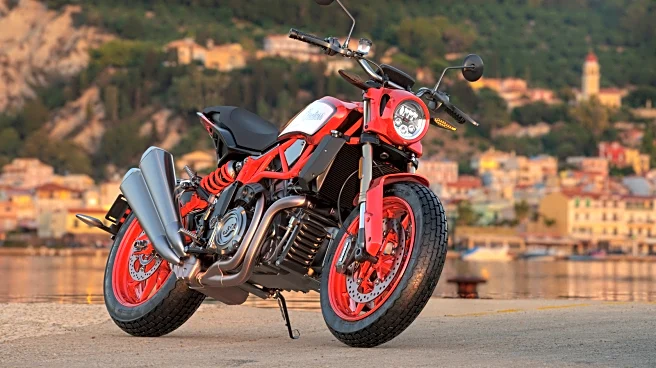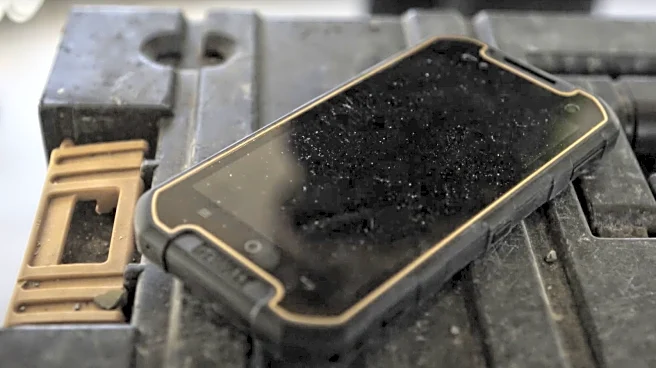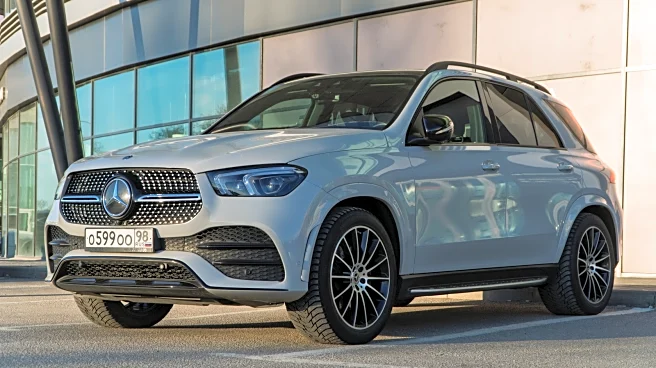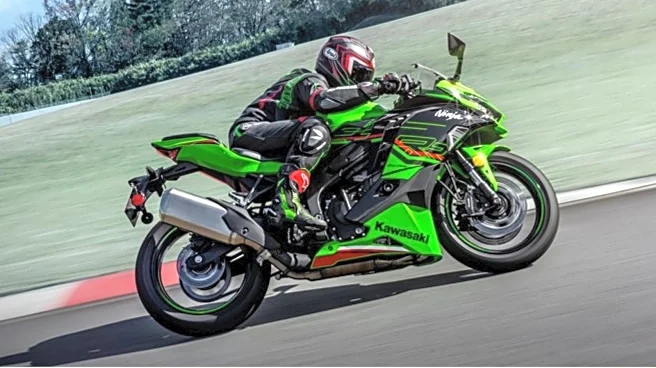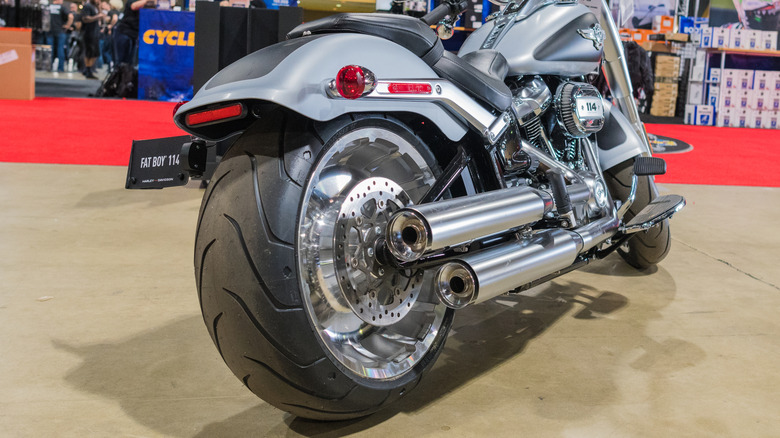
There are several reasons why some motorcycles have fat tires. For one, the extra width can provide better grip, especially for heavier bikes. Fatter tires may also last longer on heavier bikes, as skinnier tires distribute the bike's weight across a smaller surface area. This decreased wear is especially relevant when leaning into turns, since the frictional force of the road is applied to the sides of the tire. However, the main reason many riders prefer fat tires on their motorcycles is purely
for the aesthetics.
In fact, the drawbacks of fat tires almost always outweigh the benefits — literally. Bigger tires mean heavier overall bike weight, which decreases fuel mileage and demands more power from the engine to accelerate. Plus, the wider tires require riders to lean more and apply greater pressure to the handlebars when turning. These negatives may be the reason so few Harley-Davidson models come with fat rear tires. Although the brand has a heavyweight reputation, it seems Harley-Davidson prioritizes smooth handling and optimized engine power over chunky rear tires.
That being said, there are a couple of Harley-Davidson models that were officially released with fat rear tires. For this list, we've defined "fat tires" to mean any tires with widths measuring 240 millimeters or wider. These include models from the appropriately-named Fat Boy, as well as the Breakout line. On top of that, there are a few models that prove popular for fat-tire mods. Here, we focus on customized Fat Boy examples, although other Harleys are also commonly fitted with wide tires, such as the Night Rod Special.
Read more: 6 Of The Fastest Cruiser Motorcycles, Ranked By Top Speed
Fat Boy: 2018 To Present
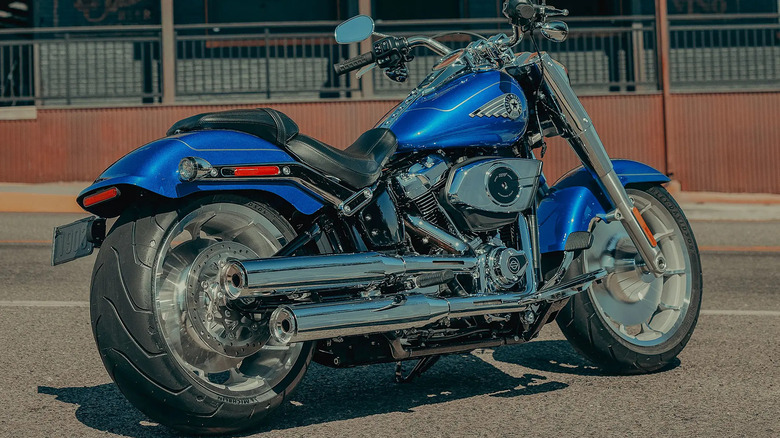
Many riders consider the newest Fat Boy to be the most difficult Harley-Davidson to ride, and its wide rear tire plays a significant part in that reputation. Indeed, the unforgiving handling of the 700-pound bike is made even more challenging by its 240-millimeter rear tire, which demands deep lean angles when cornering. This 240-millimeter tire was first incorporated into the Fat Boy design for the 2018 model year. Prior to 2018, the Fat Boy's rear tire had been increasing in width with each subsequent generation. For example, the 2000 model had 130-millimeter rear tires, the 2005 model had 150-millimeter rear tires, and the 2010 model had 200-millimeter rear tires.
Perhaps in anticipation of the poor handling of such a wide tire, Harley-Davidson has incorporated two pieces of tech into newer models designed to improve control. The first is called the Cornering Enhanced Traction Control System (C-TCS), which essentially regulates the rear wheel's spin to prevent it from spinning out when low traction is detected. The second is called the Cornering Drag-Torque Slip Control System (C-DSCS), which can prevent the rear wheel from locking up. Both systems measure the lean angle to calibrate their action, which is useful when riding the hard-to-turn Fat Boy. Neither piece of tech is enough to completely remedy the poor handling of the Fat Boy's rear tire, but they may help.
However, aside from its difficult handling, the Fat Boy is actually considered one of the most stylish Harleys ever made. And the rear tire isn't the only "fat" part of the Fat Boy's aesthetic. The handlebars are classically wide, with many model years' OEM handlebars measuring 32 inches tip-to-tip. The headlight is also huge, and it's set within thick, wide front forks that add to the beefy style.
Breakout: All Model Years
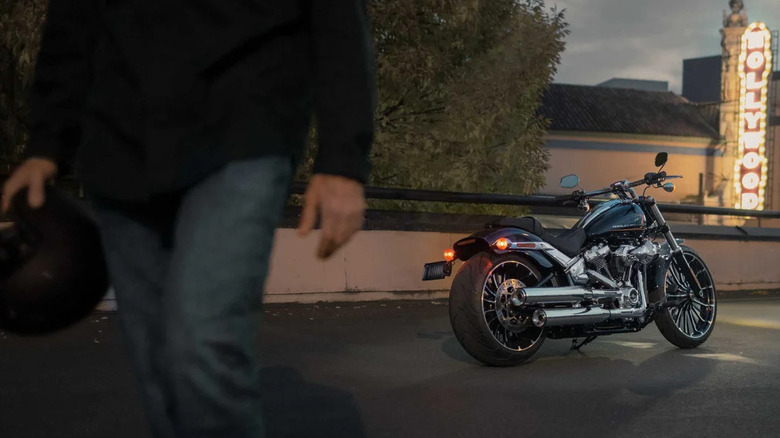
The Breakout's tires are unique in several ways. For one, its rear tire has a width of 240-millimeter, so it certainly earns its place in the "fat" category. But the rear tire's chunky look is accentuated by the slimness of the front tire. At a mere 130-millimeter in width, the front tire appears starkly different from the chunky rear tire. This contrast is further highlighted by the size differences between the two wheels: the front wheel is 21 inches in diameter, while the rear wheel is 18 inches in diameter. And as if the Breakout's tires couldn't get any more mismatched, the front is a bias-belted construction while the rear has a standard radial construction.
Although the Breakout has undergone various revisions since its release in 2013, the 240-millimeter rear tire and 130-millimeter front tire have remained the standard dimensions across every variation of the series. The 18-inch rear wheel and 21-inch front wheel diameters have also remained consistent. However, Harley-Davidson introduced several changes to the wheel composition and styling through the years, which often varied by country.
For example, early Breakout models had 10-spoke Gasser wheels in a gloss black finish. Other models increased the spoke count to as high as 26, such as the 2024 and 2025 models. Versions of the CVO Pro Street Breakout featured 5-spoke Aggressor wheels, which gave the spokes a curved appearance. Yet however Harley-Davidson decides to change the style of the Breakout's wheels, it has so far maintained the original chunkiness of its 240-millimeter rear tire, with no signs of giving it up.
Fat Bob: A Fan Favorite For Custom Tires
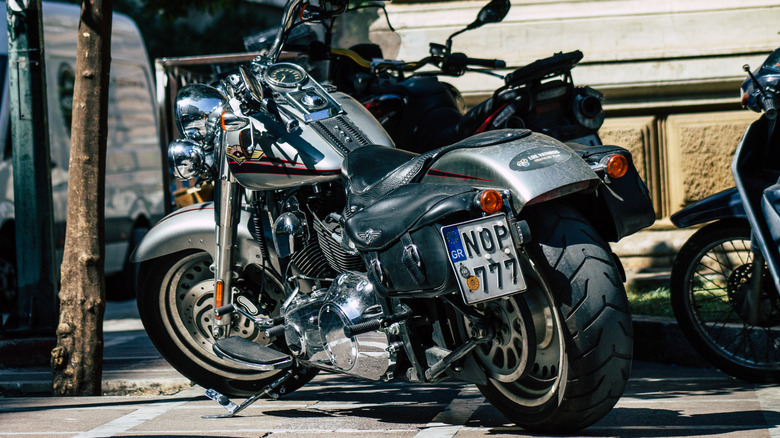
Owing to their similar names, the Fat Boy and Fat Bob are often mistakenly thought to be related motorcycles, yet they have more differences than similarities. Unlike the Fat Boy, the Fat Bob was never officially released with fat rear tires to support its name. But that hasn't stopped fans from adding aftermarket tires to beef it up. The reason the Fat Bob is such a popular choice for the upgrade is partly thanks to the fact that its stock wheels already support wider tires.
The Fat Bob has evolved considerably since it was first introduced in 2008. Originally part of the Dyna series of Harley motorcycles, it was integrated into the Softail series in 2018, with a redesigned frame, suspension, and various other updates. Still, the Fat Bob has retained the same wheel and tire dimensions through the years. Its 16-inch front wheel supports a 130-millimeter tire, while its 16-inch rear wheel supports a 180-millimeter tire. That's fairly wide, especially in contrast to the slimmer front tire, but it's far from "fat."
However, enthusiasts and custom bike shops alike have found that the Fat Bob easily accommodates a 200-millimeter tire without heavy modification. The stock rear wheel rim comes with a 5-inch width, so fitting it with a 200-millimeter tire will result in some bulging over the rim. Yet, even though the tire is wider than the wheel, the swing arm is still wide enough to accommodate a 200-millimeter width. That being said, according to forums, adding tires wider than 200-millimeter requires modification of the stock wheel, fender, and swing arm. But based on the sheer quantity of conversion kits available, the Fat Bob is a popular project bike for rear-tire fattening, with some custom jobs reaching widths of 300-millimeter.
Want the latest in tech and auto trends? Subscribe to our free newsletter for the latest headlines, expert guides, and how-to tips, one email at a time.
Read the original article on SlashGear.
